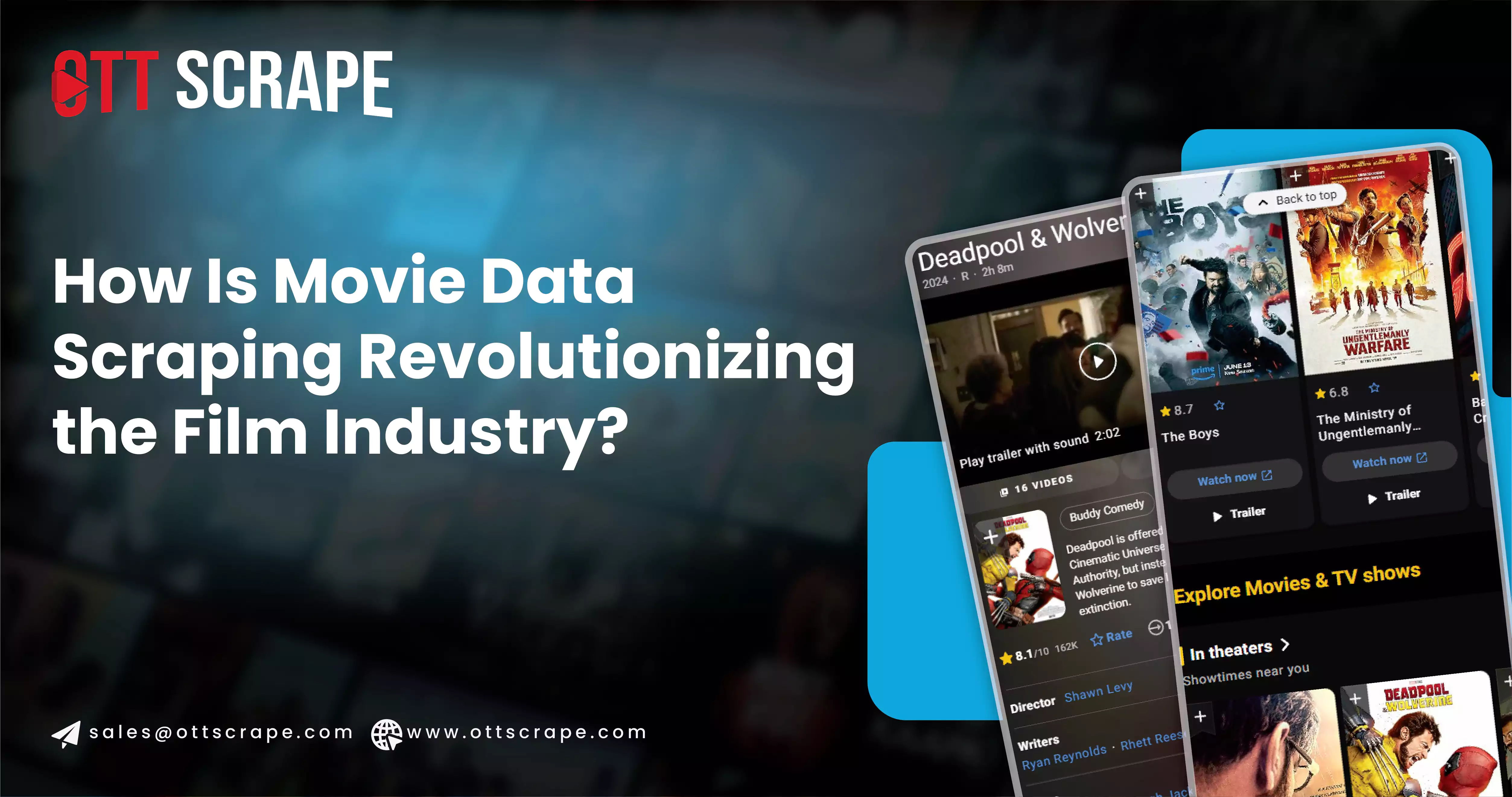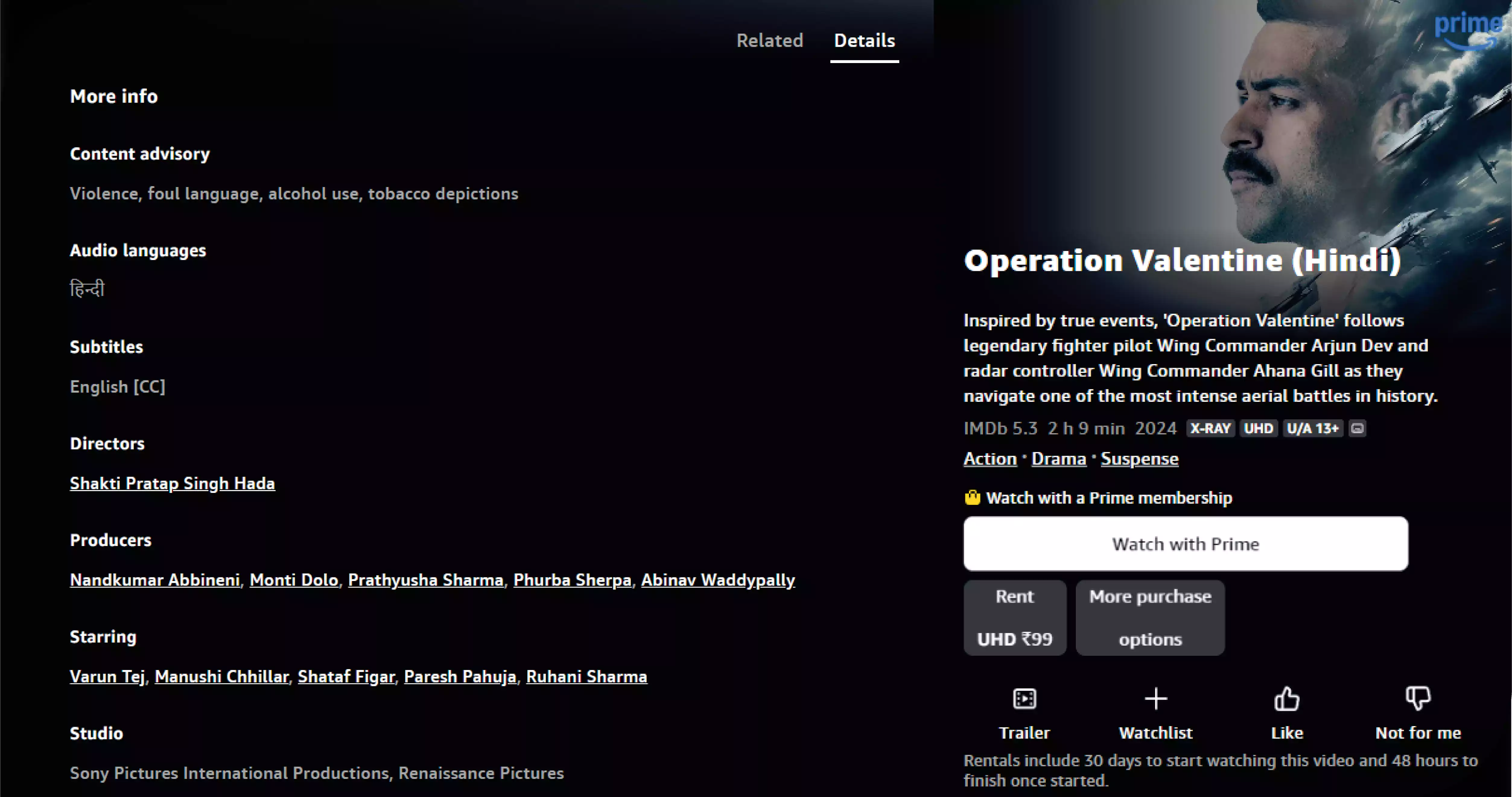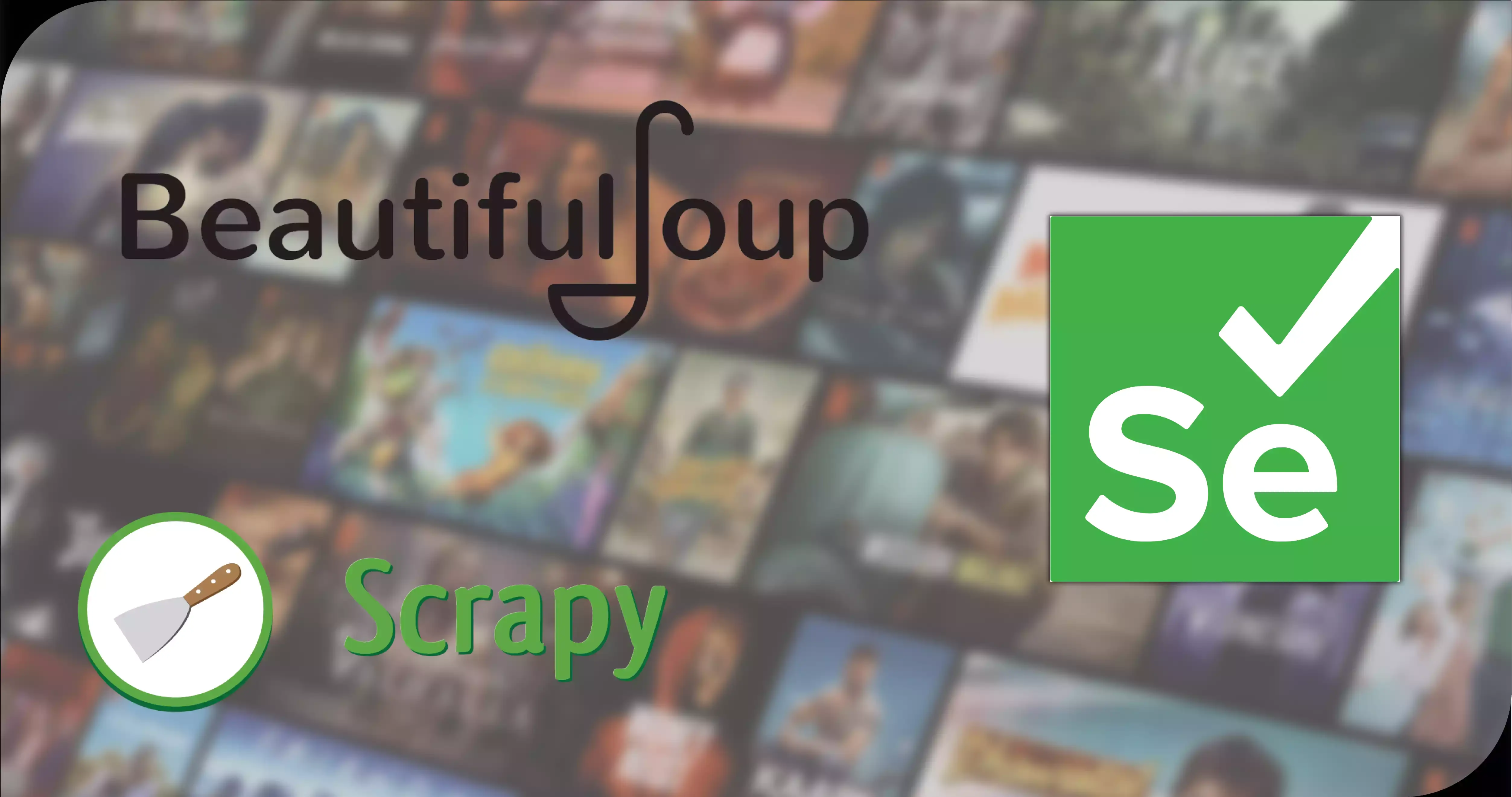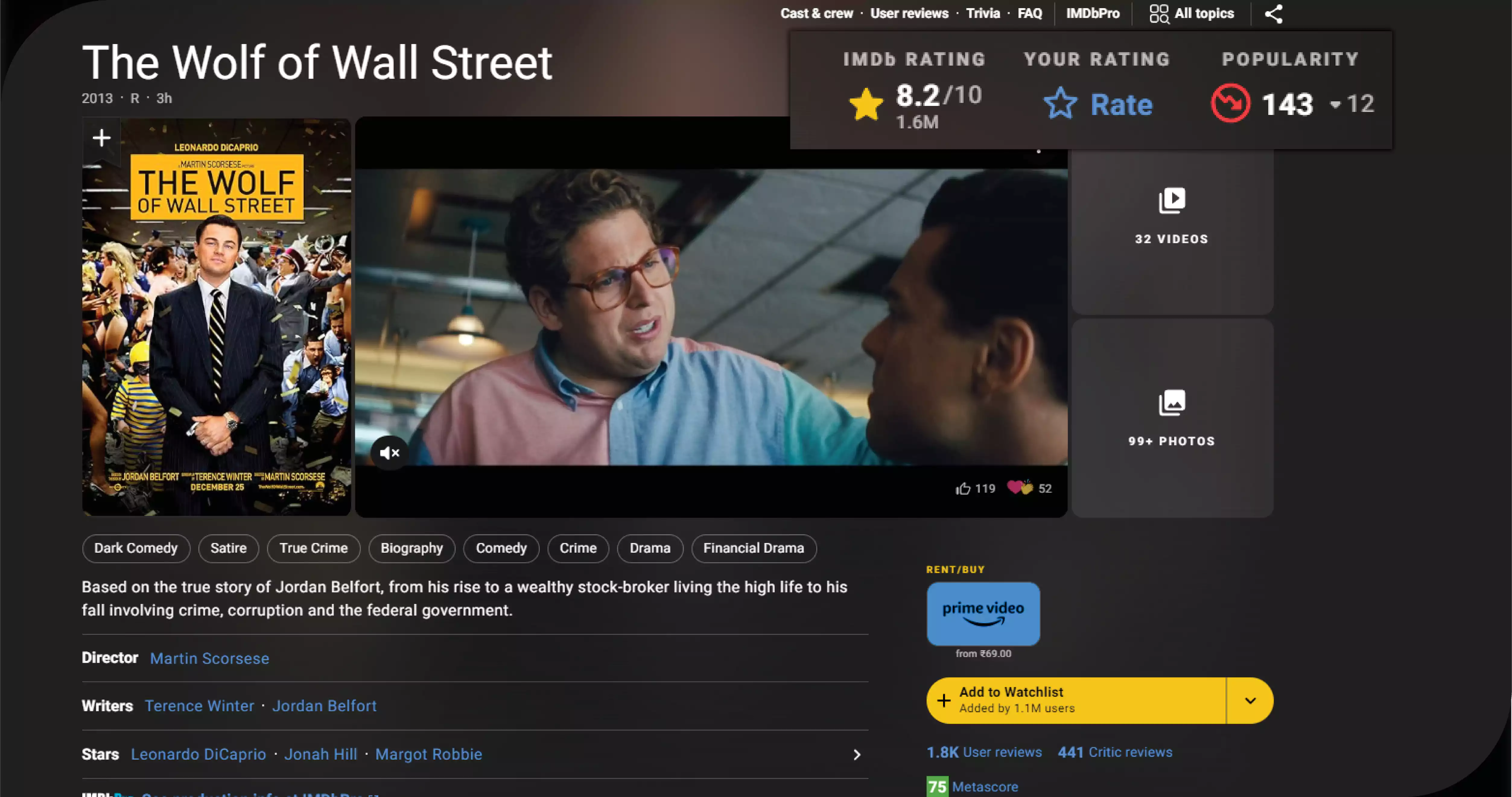
The rapid growth of movie data scraping reflects the increasing demand for detailed insights into the film industry. As digital platforms increase, stakeholders from studios to streaming services seek comprehensive data to understand audience preferences, track viewing habits, and optimize content strategies. Movies data extraction allows the collection of valuable information such as box office performance, user ratings, genre trends, and viewer demographics from various sources like streaming platforms and movie databases. This surge in the process is driven by advancements in technology, enabling more efficient and sophisticated analysis. With this influx of data, businesses can tailor their offerings, predict market trends, and enhance user engagement. However, this growth also brings challenges, including ensuring data privacy, adhering to legal regulations, and managing the quality of extracted data. The evolution in techniques continues to reshape how the film industry approaches audience insights and content development.
What is Movie Data Scraping?

Movie data scraping is extracting detailed information about films from various online sources. This technique gathers movie titles, release dates, genres, cast and crew details, box office performance, and user reviews. Businesses and researchers can compile comprehensive datasets that inform market analysis, content recommendations, and audience insights by leveraging movie data scraping services. This data is typically sourced from popular websites and databases like IMDb, Rotten Tomatoes, Box Office Mojo, and streaming platforms like Netflix and Amazon Prime. Effective movie data collection supports strategic decisions, enhances user experience, and provides insights into industry trends and consumer preferences. As a result, movie data scraping has become an essential tool for stakeholders aiming to optimize their content offerings and marketing strategies in a competitive landscape.
Why is Scraping Movie Data Important?

Scraping movie data involves collecting detailed film information from online sources. This process provides valuable insights into market trends, audience preferences, and competitive dynamics, supporting strategic decisions for studios, streaming platforms, and market analysts.
- Market Analysis: Scraping movie data gives studios and distributors crucial insights into market trends, audience preferences, and genre performance. This detailed analysis enables them to understand what themes and genres are gaining traction, guiding their decisions on future productions and marketing strategies. Businesses can make data-driven choices to align their content with current market demands by leveraging movie data scrapers.
- Content Personalization: Movies streaming data scraping is vital in enhancing user experience on streaming platforms. By collecting and analyzing data from user interactions, such as viewing history and ratings, streaming services can tailor their recommendations to individual preferences. This personalization boosts user satisfaction and increases engagement and retention on the platform.
- Competitive Analysis: Streaming platform data scraping allows businesses to monitor and analyze competitors' strategies, pricing models, and content offerings. By understanding what competitors are doing, companies can refine their approaches, adjust pricing, and optimize their content strategies to stay ahead in a competitive landscape.
- Box Office Tracking: Real-time OTT data scraping enables accurate monitoring of box office performance and other key metrics. By continuously collecting data on film performance, stakeholders can make informed decisions about distribution strategies, promotional efforts, and investment opportunities. This proactive approach helps adapt quickly to changing market conditions and maximize revenue potential.
How to Scrape Movie Data?

Movie data extraction collects film information from online sources using tools like BeautifulSoup, Scrapy, and Selenium. This process helps gather valuable movie insights from platforms like IMDb and Rotten Tomatoes, enabling informed decisions and market analysis.
1. Choose Your Sources:
Identify the websites or databases from which you plan to scrape movie data. Popular sources include IMDb, Rotten Tomatoes, Box Office Mojo, and streaming services like Netflix and Amazon Prime. These platforms offer rich datasets on films, including titles, release dates, genres, cast, crew, ratings, and box office performance.
2. Select Your Tools:
To automate the data extraction process, choose appropriate web scraping tools and libraries:
- BeautifulSoup: A powerful Python library designed for parsing HTML and XML documents. It helps navigate and extract data from web pages.
- Scrapy: An open-source framework for Python that facilitates large-scale web scraping and crawling. It is ideal for managing complex scraping tasks and handling multiple pages.
- Selenium: A tool for automating web browsers. It is beneficial for scraping websites that use JavaScript to load content dynamically.
3. Write Your Scraper:
Develop a script tailored to your scraping needs:
- Send HTTP Requests: Use libraries like requests in Python to send HTTP requests to the target website and retrieve the HTML content.
- Parse HTML Content: Use BeautifulSoup or Scrapy to parse the HTML content and locate the specific data points you need. For instance, you might extract movie titles, release dates, and ratings from the HTML structure.
- Store Extracted Data: Organize the extracted data into a structured format, such as CSV or JSON, or directly into a database. This facilitates easy access and analysis.
4. Handle Dynamic Content:
Many modern websites use JavaScript to load data dynamically, which can challenge traditional scraping methods. Use Selenium to interact with these pages, simulating user actions to trigger dynamic content loading and then extracting the necessary data.
5. Respect Robots.txt:
Always check the website's robots.txt file before scraping. This file contains guidelines on what parts of the site can be crawled or scraped, helping you adhere to the site's scraping policies and avoid legal issues.
6. Manage Rate Limits:
Implement rate-limiting strategies to prevent server overload and respect the website's resources. Introduce random delays between requests and limit the number of requests sent per unit of time to minimize your impact on the server.
Following these detailed steps, you can effectively and responsibly scrape movie data, ensuring that your activities are efficient and compliant with web scraping best practices.
Applications of Scraped Movie Data

Scraped movie data has various applications, including enhancing recommendation systems, generating market research reports, creating engaging content, and forecasting revenue. By leveraging movie data collection, businesses and analysts gain valuable insights to optimize strategies and drive industry success.
1. Recommendation Systems: Movie data collection is pivotal for enhancing recommendation algorithms on streaming services. By analyzing scraped data, platforms can offer users personalized movie suggestions based on their viewing history, ratings, and preferences. This targeted approach improves user satisfaction and increases engagement by ensuring that recommendations are relevant and appealing.
2. Market Research Reports: Analysts leverage scrape popular movies data to generate comprehensive market research reports. This data provides insights into industry trends, audience behavior, and competitive dynamics. By examining patterns and shifts in the market, businesses can make informed strategic decisions, optimize their content strategies, and identify new opportunities.
3. Content Creation: Media outlets and bloggers utilize scraped movie data to produce engaging content such as film reviews, top-10 lists, and in-depth industry analyses. Using up-to-date and accurate information can attract more readers, boost traffic, and foster greater engagement with their audience.
4. Revenue Prediction: Studios and distributors rely on scraped box office data to forecast potential earnings and adjust their marketing and distribution strategies. Analyzing this data helps them understand revenue trends, optimize release schedules, and make strategic investments to maximize profitability.
By effectively applying these insights, stakeholders can leverage movie data to drive growth, enhance user experiences, and maintain a competitive edge in the industry.
Conclusion: Scraping movie data offers many opportunities for analyzing trends, enhancing user experiences, and driving business strategies in the film industry. By leveraging the right tools and practices, stakeholders can harness this data to gain valuable insights and make informed decisions. However, it's crucial to approach data scraping with a strong understanding of ethical and legal considerations to ensure responsible and effective use of the data. As technology continues to evolve, the capabilities and applications of movie data scraping will only expand, offering even more significant potential for innovation and growth in the industry.
Embrace the potential of OTT Scrape to unlock these insights and stay ahead in the competitive world of streaming!
